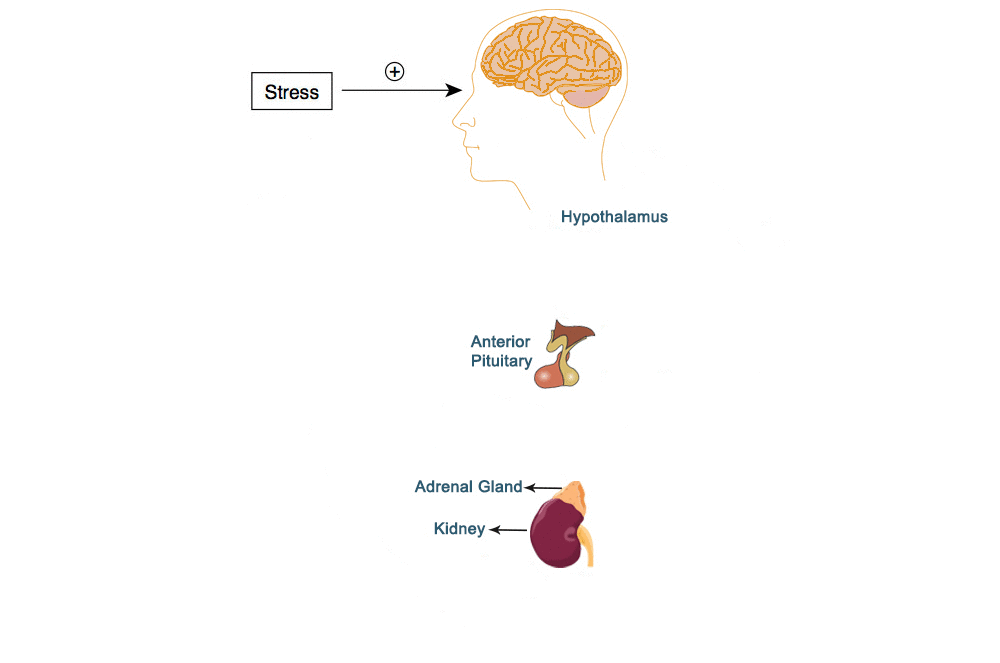
HPA axis
The hypothalamic–pituitary–adrenal axis (HPA axis) is a complex series of direct interactions and regulation among the hypothalamus, the pituitary gland, and the adrenal glands; which plays an important role in the stress response. The HPA axis regulates many other biological processes, including digestion and energy usage, the immune response, sexuality and emotions.
Stress-induced activation of HPA axis up-regulates the plasma level of glucocorticoid hormones (cortisol in human, corticosterone in rats and mice). In the liver, adipose tissue, and the central nervous system, enzyme 11β-hydroxysteroid dehydrogenase type 1 (11HSD1) reduces cortisone to the active hormone cortisol that activates glucocorticoid receptors. Cortisol, as a steroid hormone, regulates a wide range of biological processes including the immune response, metabolism, and most importantly it plays a key role in stress response. 11β-hydroxysteroid dehydrogenase type 2 (11HSD2) on the other hand deactivate the cortisol by oxidizing it to cortisone, and prohibits receptor activation. Corticosterone despite its presence has a minor importance in human, however, in rodents, birds and reptiles, corticosterone is the primary glucocorticoid.
The regulation of HPA axis mediated by direct feedback loop of its end products (Cortisol and corticosterone) as well as part of the brain (hypothalamus) which is involved in stress response.
